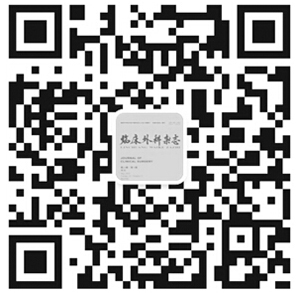|
|
Comparative study on laparoscopic repair and Onlay repair of recurrent incisional hernia
TU Huahua, CAI Qinghe, ZHOU Huadong, et al.
JOURNAL OF CLINICAL SURGERY. 2020, 28 (4):
361-364.
DOI: 10.3969/j.issn.1005-6483.2020.04.020
Objective
To compare the clinical effects of two surgical methods in abdominal incisional hernia,and to explore the safety and feasibility of laparoscopic repair in abdominal incisional hernia.
Methods
The clinical data of 52 patients with incisional hernia of abdominal wall admitted to hepatobiliary surgery of our hospital from August 2012 to December 2018 were retrospectively analyzed.Among them,28 cases were treated with Onlay repair(pre-sheath repair)and 24 cases were treated with laparoscopic repair.The operation time,intraoperative blood loss,post-operative pain,post-operative complications and operation were compared and analyzed between the two groups.Posterior recovery and inflammatory markers.
Results
(1)The operation time of laparoscopic repair group was longer than that of Onlay repair group,and intraoperative blood loss was less than that of Onlay repair group(P<0.05),2 cases of intestinal injury in laparoscopic group and 4 cases of intestinal injury in Onlay group had statistical significance(P<0.05).(2)12,24,48 hours after operation,abdominal cavity.(3)2 cases of incision infection,1 case of incomplete intestinal obstruction and 3 cases of complications(12.50%)in laparoscopic repair group.In Onlay group,there were 1 case of seroma,4 cases of incision infection,3 cases of incomplete intestinal obstruction and 8 cases of complications(28.57%).There was no intestinal fistula after operation in both groups.The incidence of complications in laparoscopic repair group was lower than that in Onlay repair group(P<0.05).(4)The hospital stay and ambulation time in laparoscopic group were shorter than those in Onlay group(P<0.05).The cost of hospitalization was higher than that of Onlay repair group(P<0.05).(5)12,24,48 hours after operation,the serum inflammatory factors(CRP,IL-6,PCT)in laparoscopic group were lower than that in Onlay control group(P<0.05).(6)After 6-48 months follow-up,there was no significant difference in recurrence rate between the two groups(P>0.05),but the recurrence rate in laparoscopic group(4.17%)was slightly lower than that in Onlay group(7.14%).(7)After 6 months follow-up,the quality of life scores of the observation group were higher than those of the control group(P<0.05).
Conclusion
Both methods are safe and effective in the treatment of incisional hernia of abdominal wall.Laparoscopic repair for abdominal incisional hernia has the advantages of early postoperative activity,short hospital stay and less complications.
Related Articles |
Metrics
|

 Table of Content
Table of Content
 Table of Content
Table of Content